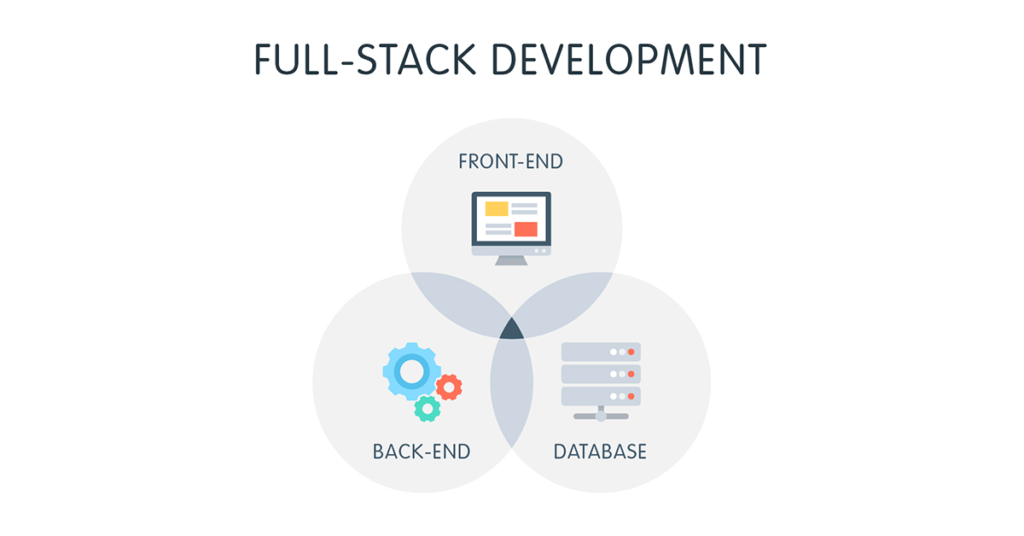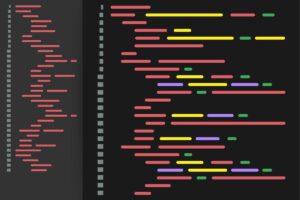In the rapidly evolving tech industry, the role of a full-stack developer stands out as one of the most versatile and valuable. Full-stack development involves the integration of both front-end and back-end technologies, allowing developers to create comprehensive web applications from start to finish. For those looking to embark on this journey, having a structured learning roadmap is essential. This guide aims to demystify full-stack development, providing a clear path from foundational knowledge to advanced expertise.

The Importance of Full-Stack Development
Full-stack development is more than just a buzzword; it’s a holistic approach to web development that encompasses both the client-side (front-end) and server-side (back-end) aspects of a web application. Full-stack developers are equipped to handle every layer of the development process, making them indispensable in both small startups and large enterprises. The ability to move fluidly between front-end and back-end development not only enhances problem-solving skills but also significantly increases employability in a competitive job market.
Step 1: Building a Strong Foundation in Front-End Development
The journey to becoming a full-stack developer begins with mastering front-end development. This is where users interact with a website, and it involves creating the visual and interactive elements that engage users.
- HTML/CSS Mastery: HTML (HyperText Markup Language) and CSS (Cascading Style Sheets) are the building blocks of web development. HTML structures the content, while CSS defines the layout, colors, and fonts. Mastery of these languages is essential for creating visually appealing and responsive websites.
- JavaScript Proficiency: JavaScript is the core programming language for front-end development. It brings websites to life by enabling interactive elements like sliders, forms, and dynamic content. JavaScript is also the gateway to learning popular frameworks such as React, Angular, and Vue.js, which streamline the development process and offer reusable components.
- Coding Exercises and Projects: To solidify your front-end development skills, engage in coding exercises and small projects. Building real-world applications, such as a personal portfolio site or a simple e-commerce front-end, will reinforce your learning and prepare you for more complex tasks.
Step 2: Mastering Back-End Development
Once you’re comfortable with front-end development, it’s time to dive into back-end development. This involves managing databases, server logic, authentication, and everything that happens behind the scenes of a web application.
- Server-Side Programming Languages: Start by learning a server-side programming language like Python, Ruby, Java, or Node.js (JavaScript). Each of these languages has frameworks (like Django for Python or Express for Node.js) that simplify the creation of robust and scalable back-end systems.
- Database Management: Understanding how to work with databases is crucial for back-end development. Learn SQL (Structured Query Language) for managing relational databases like MySQL or PostgreSQL, and explore NoSQL databases like MongoDB for more flexible data structures.
- APIs and RESTful Services: Modern web applications often rely on APIs (Application Programming Interfaces) to communicate between the front-end and back-end. Learning how to build and consume RESTful APIs is a key skill for any full-stack developer, enabling seamless data exchange and integration with third-party services.
Step 3: Bridging the Gap with Full-Stack Development
Having a solid grasp of both front-end and back-end development is the hallmark of a full-stack developer. However, the real value lies in integrating these skills to build complete, end-to-end applications.
- Integrating Front-End and Back-End: Practice connecting your front-end applications to a back-end server using APIs. This involves setting up a database, creating server-side logic, and ensuring the front-end correctly displays and interacts with the data. Projects like building a full-fledged blogging platform or an online store are excellent ways to practice these skills.
- Version Control and Collaboration: Learning how to use version control systems like Git is essential for full-stack developers, especially when working in teams. Platforms like GitHub not only help in managing code versions but also facilitate collaboration on larger coding projects.
- Participating in Coding Workshops and Challenges: To keep your skills sharp and stay updated with industry trends, participate in coding workshops and challenges. These events offer opportunities to solve real-world problems, learn from peers, and get feedback from experienced developers. They also provide a platform to showcase your skills to potential employers.
Step 4: Continuous Learning and Specialization
Full-stack development is a broad field, and there’s always something new to learn. As you gain experience, you may choose to specialize in certain areas, such as cloud computing, DevOps, or advanced data structures.
- Advanced Topics: Delve deeper into topics like software engineering principles, algorithms, and data structures. Understanding these concepts will not only make you a better developer but also prepare you for coding challenges and technical interviews.
- Online Coding Tutorials and Resources: Leverage online coding tutorials and educational platforms to continue your learning journey. Whether it’s through formal programming lessons or self-guided study, the wealth of resources available online makes it easier than ever to stay ahead in the field.
- Building a Portfolio: Create a portfolio showcasing your best work, including coding projects that highlight your full-stack development skills. A strong portfolio is a powerful tool for job hunting, demonstrating your ability to prospective employers.

Becoming a proficient full-stack developer requires dedication, continuous learning, and hands-on practice. By following this learning roadmap, you can systematically build your skills in front-end and back-end development, ultimately mastering full-stack development. Whether you’re aiming to land your first job in tech or advance in your current role, these steps will set you on the path to success in this dynamic and rewarding field.




